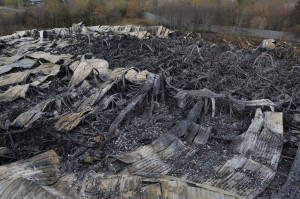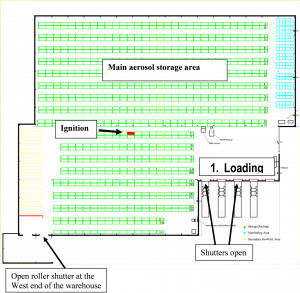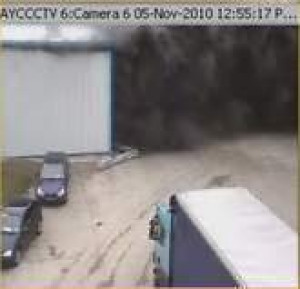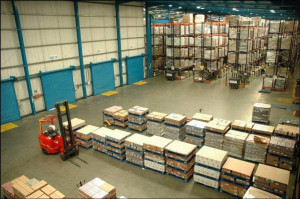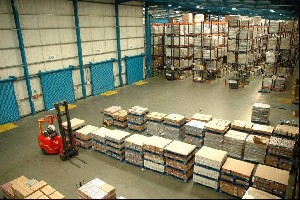Fire broke out around 1 pm in a warehouse for sanitary aerosol products. The facility contained some 4,000 pallets of spray cans, whose average ingredients consisted of 60% LPG and 40% ethanol by weight; it also housed an equivalent number of pallets with liquid hair dyes and plastic bottles of shampoo. These pallets, stored on racks up to 6 levels high, were transported using electric forklifts. The fire was discovered shortly after ignition, but internal first responders using an extinguisher were unable to control the blaze. The alarm was sounded and approx. 10 employees escaped from the warehouse in roughly 40 seconds. Video surveillance recordings showed that the first explosion facilitated the extreme speed at which the fire spread, as smoke filled the entire building within 80 seconds. The second explosion occurred 150 seconds after the alarm rang and blew off part of the roof. Cameras placed on adjacent buildings were shaken. About 20 min after the alarm was activated, the building column structure began to collapse. Emergency crews set up a safety perimeter, stopped traffic and confined neighbours and nearby schools indoors. Water was used to cool buildings in the vicinity and stop the fire from spreading, though the inflamed building that could no longer be extinguished was not watered.
Controlled water use during the response prevented pollution from reaching the nearby river. Nonetheless some 200 fish died due to detergents and shampoo washing into the river after the fire, notably by rainwater. Property damage amounted to €12 million and approx. 30% of the warehoused goods were destroyed. The fire was finally extinguished on 7th November.
The workplace safety agency conducted an investigation. Damage to the stacked spray cans caused by forks on a forklift had created the initial gas leak, which then ignited when placed in contact with the vehicle. Storage zones were not considered subject to ATEX Directive requirements, and the forklifts had thus not been protected against the explosive atmosphere risk. Moreover, the warehouse had not been fitted with sprinklers.
This accident demonstrates that in the presence of large quantities of spray cans, unprotected forklifts constitute a major risk in the event of a leaking can. The onset of fire can spread very quickly, underscoring the need to plan for emergency measures; evacuation drills are to be held on a regular basis. Special attention must also be paid to storage zones comprising several levels, with more complicated evacuation paths and greater smoke accumulation in the event of fire.
Download the detailed report in .pdf format (476 Kb)



